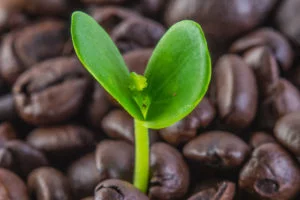- You have no items in your shopping cart
- Continue Shopping

The Pod Pandemic
The creation of the coffee pod was ground-breaking. It made our hot cup o’ joe more accessible and convenient in the domestic setting than ever before. Traditional methods such as immersive, drip and pressured extractions required specialised skills, knowledge and expensive equipment that not all had the time to invest in. On face value, the coffee pod seemed revolutionary, however, years later what once seemed so great has given way to one of the industry’s biggest ecological crimes.
Billions of these small aluminium and plastic composite pods sit in landfill taking hundreds to thousands of years to decompose. Australian households alone contribute $215 million a year towards the single use pod market, the vast majority of which are not biodegradable. In this article we explore the different types of pods available, which is best for the environment and your bank account: *hint* *hint* it’s reusable coffee pods.
What it all Means: Reusable, Single Use, Compostable and Biodegradable Pods?
If you’re new to the coffee pod world you may come across terms such as: reusable, recyclable, biodegradable and compostable. Confused about what they mean? Check out our convenient definitions below:
|
Reusable coffee pods |
Unlike any other capsules, reusable pods feature a metallic construction which can be reused again and again and again… |
|
Single use pods and recyclable pods |
These pods are used only once before being jettisoned into the waste or recycling |
|
Compostable pods |
These are single use pods; however, they can decompose given the right industrial conditions |
|
Biodegradable pods |
These are single use pods which can decompose in landfill |
So, why should you buy reusable coffee pods? Wouldn’t recyclable, biodegradable and compostable pods achieve the same ends? Keep reading below to find out why these single use pods fall short compared to our humble reusable pod.
Compare the Pair…or Four
When you browse your local supermarket shelves, opting for pods which are branded as ‘recyclable’, ‘compostable’ or ‘biodegradable’ might seem tempting. At a glance, most would assume these are the panacea of our shameful past: cheap, nasty and disposable consumerism. We wouldn’t blame you for thinking so, but don’t be fooled by a pretty label!
Despite their name, recyclable pods are seldom recycled. The cost of transporting and preparing these pods into their requisite condition for recycling can exceed their economic return. Even if used pods make it to a recycling facility, the energy required to shave the aluminium, scorch the varnish and melt the treated materials further augments their environmental cost.
Well, surely compostable pods are up to the task? The truth is, these products are designed to decompose in very specific biomes which are unfortunately far and few between. Even with the best intention from the consumer, the vast majority of these pods end up in landfill where they can leech greenhouse gases into the atmosphere. Although, there are services which are designed to collect compostable and recyclable pods to be delivered to their appropriate processing facilities, the resulting pollution for transporting these types of pods can come at a high price.
Surely, biodegradable pods merit consideration then? Unlike their compostable counterpart, biodegradable pods can break down in ‘normal’ landfill conditions, and they do have a smaller environmental impact when compared to single use and recyclable pods. However, they are only single use and require an unrelenting, energy hungry, supply chain to meet demand.
[On cue, the reusable pod enters]. It doesn’t need to be recycled, decomposed or meet the manufacturing strains of single use pods. It doesn’t require fickle composting conditions, toxic chemical treatment or endless packaging. Instead, this neat little capsule can do as its own name suggests – be reused.
I Want My Cake and I’ll Eat It Too
There’s got to be a catch, right? It has to be expensive? Although the cost of a single reusable coffee pod exceeds the cost of a single recyclable, compostable or biodegradable capsule, one must remember that reusable pods can last a lifetime. When you factor this in, the single cost of a reusable pod over decades becomes negligible, particularly when the cost of its counterparts can average between $0.50 to $1.30 a cup.
Before you think, ’this can’t get any better’, let us stop you; reusable pods let you use whichever coffee your heart desires. Whether it be your favourite roast from your local café, a packet of beans from the supermarket shelf or hell, maybe you’ve started roasting your own coffee. Reusable coffee pods open your palate to a world of flavour which other pods cannot offer.
And, with flexibility in flavour comes flexibility in budget. Suppliers offer coffee at wildly different price points, dependant on: bean quality, roast freshness, processing method and origin characteristics to name a few. However, it’s important to remember that even those purchasing expensive speciality roasts, can still expect to pay a similar price in coffee per pod compared to the cheaper end of the single use pod market.
Feeling inspired? Swap to podly reusable coffee pods today! Check out our full range of reusable Nespresso, ALDI K-fee, Caffitaly and Dolce Gusto compatible pods; plus, tampers, grinders and more to get you started!




